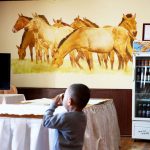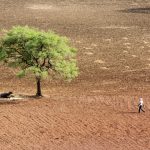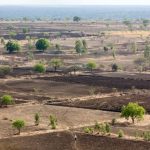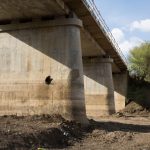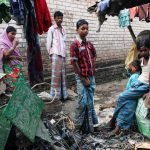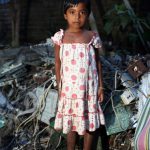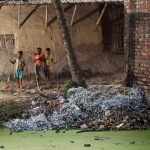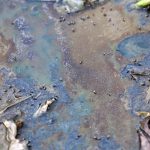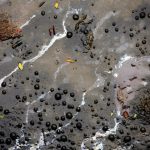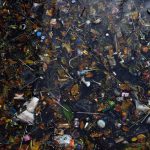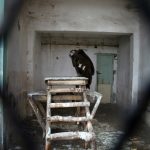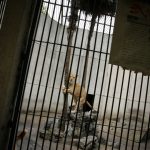His website: http://gallagher-photo.com

Sean Gallagher is a British photographer and filmmaker who has been based in Asia for over a decade.
Sean often spends months in the field documenting the worlds most important environmental, social and cultural issues for some of the world’s leading news outlets.
He creates photographic, video and multimedia projects which often highlights people’s stories from communities which have/are affect by these issues such as desertification, pollution, species extinction and climate change.
He has done environmental projects in China, India, Indonesia, Mongolia and Sri Lanka. His projects include:
- Saving Mongolia’s Wild Horses
- Drought in India
- Beijing – The Masked City
- India’s Rising Tide of E-Waste
- Tainted Waters: Pollution in Jakanta
- Lockdown – Inside China’s Zoos
Saving Mongolia’s Wild Horses:
The przewalski horse was once on the brink of extinction but in bouncing back thanks to the work of conservationists and scientists who have reintroduced the species. The world is currently experiencing a new age of extinction which is the 6th to occur throughout global history.
Sean Gallagher wants to raise awareness of the small but extremely important environmental issues and successes which the news does not talk about as it does not involve terrorism. His photographs aren’t the best composed but they have a strong meaning behind them which makes them unique in many different ways. He does have images in the collection which are well composed and thought out but it is very difficult to photograph animals which are often scared of people. Sean Gallagher takes very good landscape photographs in my opinion as the white snow contrasts with the brown horses and the blue sky.
Drought In India:
In the summer of 2016, some parts of India experienced record breaking droughts which was the result of consecutively failed monsoons.
Global temperature records have been record in each month of 2016 and India has its highest recorded temperature of 51C. This is something the news doesn’t tend to cover as India is considered an undeveloped country and is not worth covering unless it has been destroyed by an environmental disaster. This is why i like Sean Gallagher as he covers stories which are important as they raises awareness of what we are doing to the planet. His photographs are very shocking and thought provoking which makes them important and unique. They show the world what global warming is causing in the most dramatic fashion using documentary photography. I think the most shocking photo of this gallery is the one of the landscape in which only trees are visible and the ground is a dark brown and cracked.
The Masked City:
“I’m really scared of the pollution”, says Mrs. Zhang, a 62-year old retiree who has just finished her morning exercises in Beijing’s Ditan park
This project of his relates almost identically to mine in which he is photographing people in masks they have to wear due to the high levels of pollution. I am photography people in beautiful, natural environments with a mouth mask and a gas mask to show that the pollution levels are rising around the world. His photographs are very striking as they are environmental portraits but they have an element of formal portraiture within them. I think they are very well composed and show the true life of people in China and how their life has been restricted by the levels of pollution. I think it is really shocking that he has a photograph of an innocent child wearing a mask to protect them, i think this is sad because they do not have a normal childhood like children in other parts of the world do. They are restricted to what they can do because of health risks, i think this is really sad and the world should make an effort to help heal the planet so the children of the future can have a normal life.
India’s Rising Tide of E-Waste:
By 2017, all of that year’s end-of-life refrigerators, TVs, mobile phones, computers, monitors, e-toys and other products with a battery or electrical cord worldwide could fill a line of 40-ton trucks end-to-end on a highway straddling three quarters of the Equator. — United Nations’ Solving the E-Waste Problem (StEP) Initiative
I think these photos are more thought provoking rather than shocking as the world knows that electrical waste just ends up somewhere in the world as it’s not biodegradable. Sean Gallagher has composed these photos very well and has documented the life which people in India live very well as some of these photos are very intimate and show the reality of life for children who live around E-Waste. His portraits of young children are very powerful and well composed within the environment. His photos show that India is the dumping ground for the developed worlds rubbish and no one seems to care they are are living in filth and there are dangers around them all the time, like for example, the young children stepping on either glass or plastic.
Tainted Waters: Pollution in Jakarta:
Jakarta is the Indonesian Capital and the first impression should be the electric culture and the diversity of Indonesian people but it was not. The smell was: “400,000 liters of waste are dumped into the capital’s rivers and canals every day.”
It seems that we do not care about the undeveloped and minority countries of the world and use them are our dumping countries but the news would never cover this. This is why Sean Gallagher photographs these issues because he wants to bring to light what is hidden from our view by the media and how we need to change our ways and now. These photographs are more abstract photography than documentary photography but however is shows clearly the level of pollution in the river which we would not see from afar. I think these are some of his most interesting photos which he as taken because they do not follow his usual pattern of documentary photography. He gives us a different outlook on pollution than ordinary photographers.
Lockdown – Inside China’s Zoos:
Hidden away in the second tier cities of China, are a plethora of smaller unknown zoo which do not have the capacity to provide the proper care and environments for these animals.
For me, this is the most shocking of his projects mostly because i feel very strongly about Zoos in the sense that if they are not there to help save animals from extinction then they should not exist. These images show what no one knows, what no one cares about and how no one is trying to help these animals. His photographs are not well composed but i think that is the idea because he did not want to show the zoo through pretty, well composed images because that defeats the point of this project. For example, he has a blurry image of an elephant but it works well with the project as it shows the desperation and mayhem which occurs in these zoos. Many of these animals will have not known a life outside of the bars which they are confined too and will most likely never know what freedom feels life. I personally wish i had the money and ability to close down these zoos and give the animals a proper life which they deserve.



